How Small Can You Grow?
Miniature gardening's wee wonderful worlds
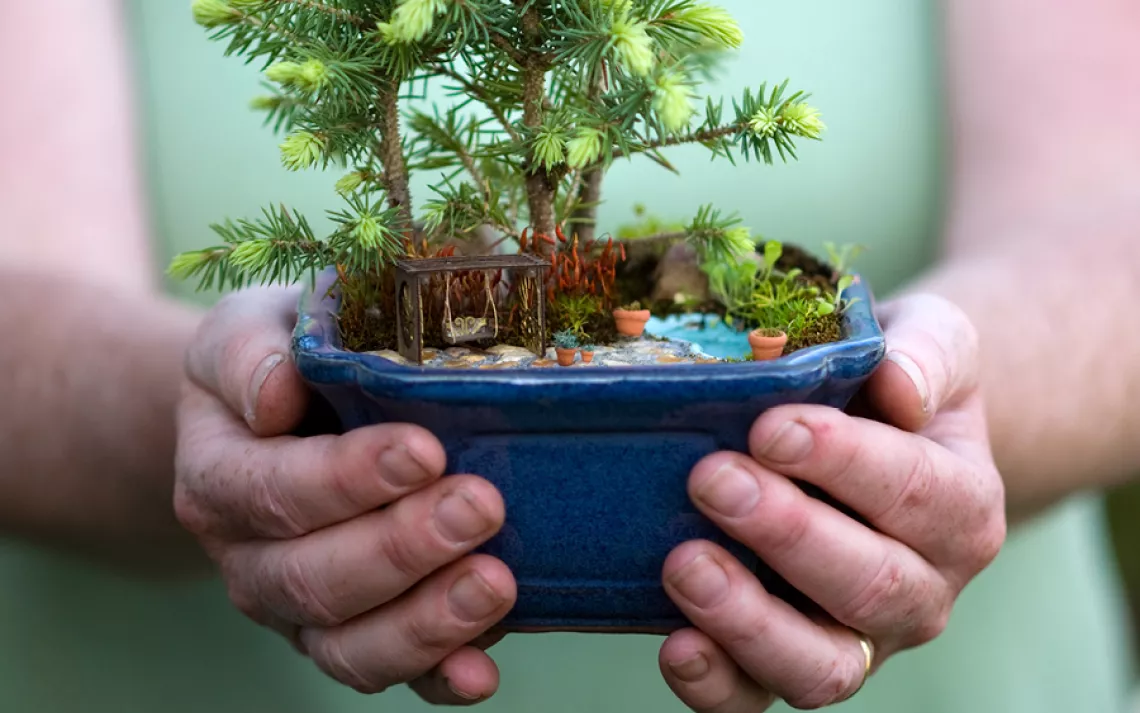
To borrow a line from the fine folks at National Novel Writing Month, "No plot? No problem!" You can plant a garden in something as small as a thimble, as Janit Calvo delightfully shows in her new book, Gardening in Miniature: Create Your Own Tiny Living World (Timber Press, July 2013). This horticultural how-to will help you choose pots and plants, build a patio out of pebbles and a fence and trellis out of twigs, and care for your tiny ecosystem: Water gently when needed, aerate the soil with a fork every few weeks, and perhaps, every few years, divide your groundcover.
Calvo, who has flourishing miniature gardens that are going on 10 years old, got her start in Lilliputian landscapes thanks to a wonderful commingling of endeavors: She was working at a Seattle gardening store while designing a line of greeting cards featuring ⅙-scale miniatures. Now, thousands of petits pots later, she runs Two Green Thumbs Miniature Garden Center and blogs on the latest and greatest ideas in sowing small scenes (a tiki garden, a make-your-own Stonehenge, even kokedama—potless plants that hang from a string). Let's dig relatively deeper into how you, too, can become a Vita Sackville-West, a Frederick Law Olmstead, or perhaps a Christo, on a minor—say ¼-inch—scale.
Photo by Kate Baldwin
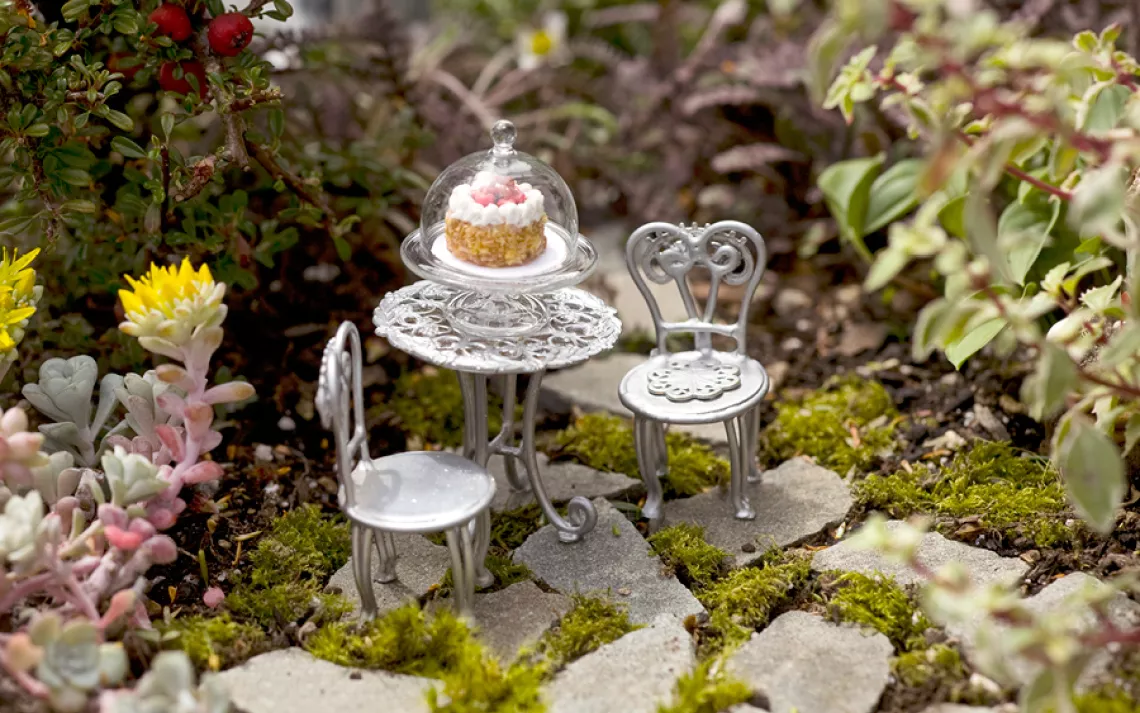
"Enchantment happens when everything is in proper scale," Calvo writes. Use the principles of full-size garden design for your teeny terra firma, and select one focal point to determine its scale. Here viewers should want to pull an incredible-shrinking-person act, take a seat with a friend, and catch up over cake.
Photo by Kate Baldwin
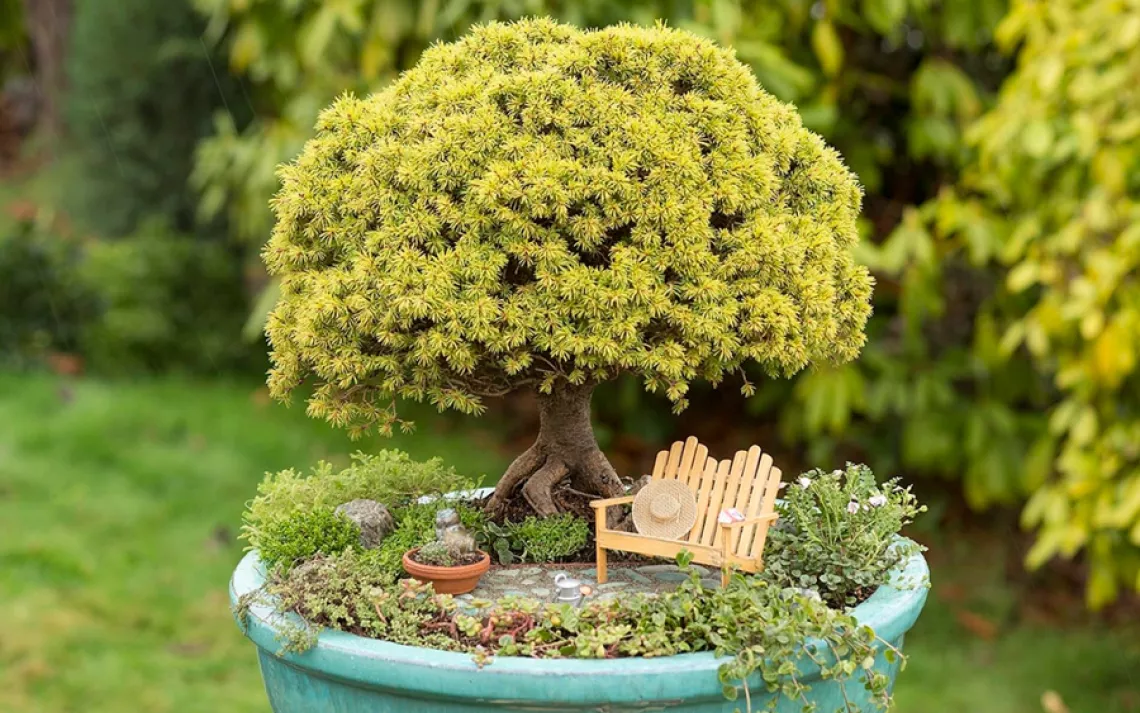
A single tree, like this bonsai, makes a perfect anchor point for your garden design. Bonsai trees aren't true miniatures, Calvo points out, but rather trees whose growth is restricted by having their roots confined in small containers ("bonsai" means "tray planted" in Japanese). To prevent a bonsai from supersizing your mini-Eden, keep it in its original pot when you plant it in your landscape. How to tell if it needs more or less water? Stick your finger in the soil.
Photo by Kate Baldwin
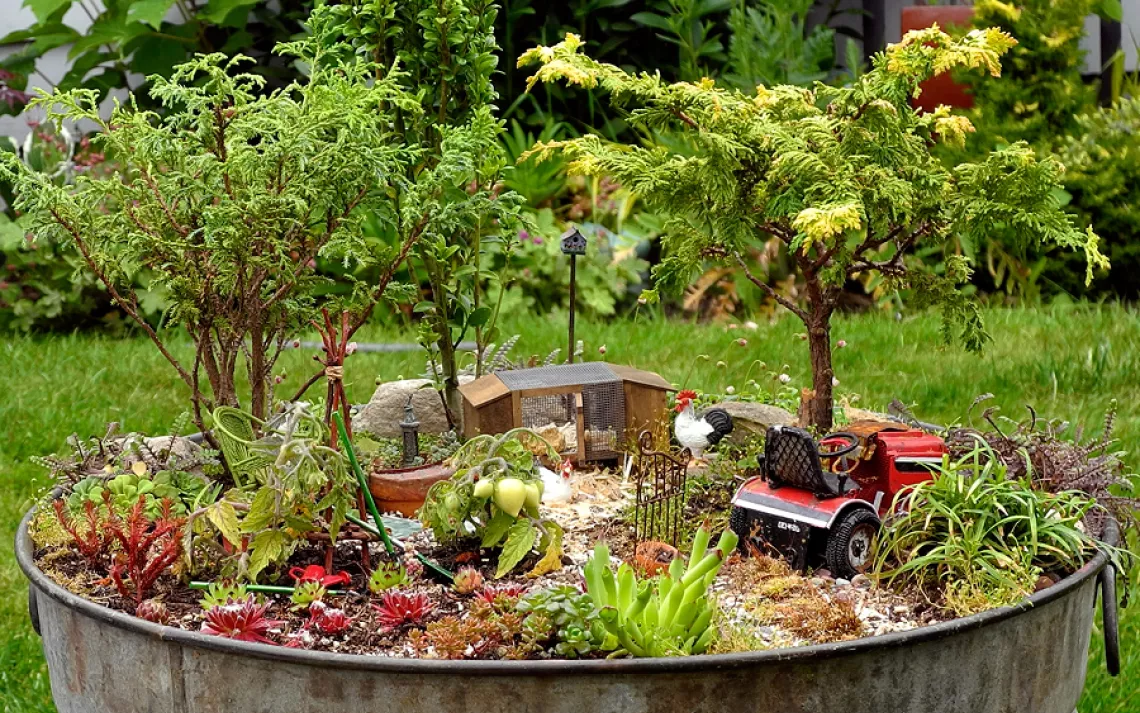
"Creating a garden is no different in complexity than designing a dress or the interior of a room," Calvo says. "You need to know what to look for first, and how the pieces fit together." The eye discovers plenty of "ah" moments as it travels over the details woven into this farm—from chicken coop to tractor, birdhouse to watering can.
Photo by Kate Baldwin
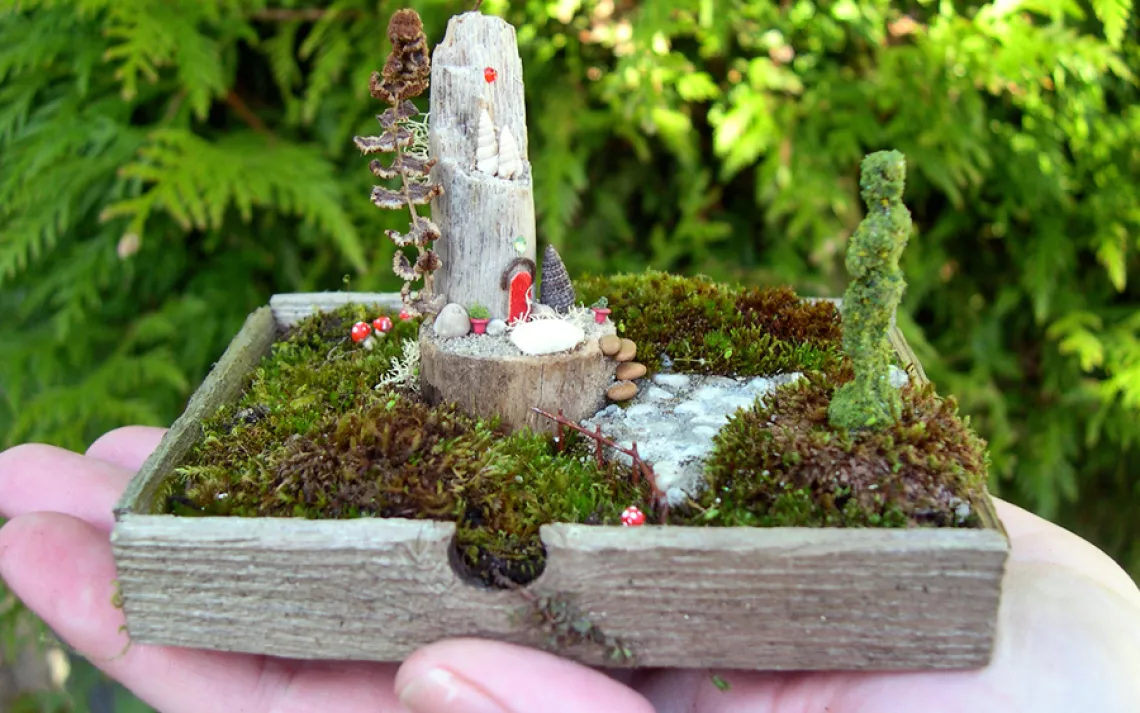
Add a tiny red door and seashell turrets to a found piece of wood and—magic—you've got a fairy house to use as a focal point for a miniature garden. This garden has been constructed in the small scale, in which a ¼ inch equals 1 foot—thus, a 1¼-inch topiary looms like a 5-foot one.
Photo by Janit Calvo
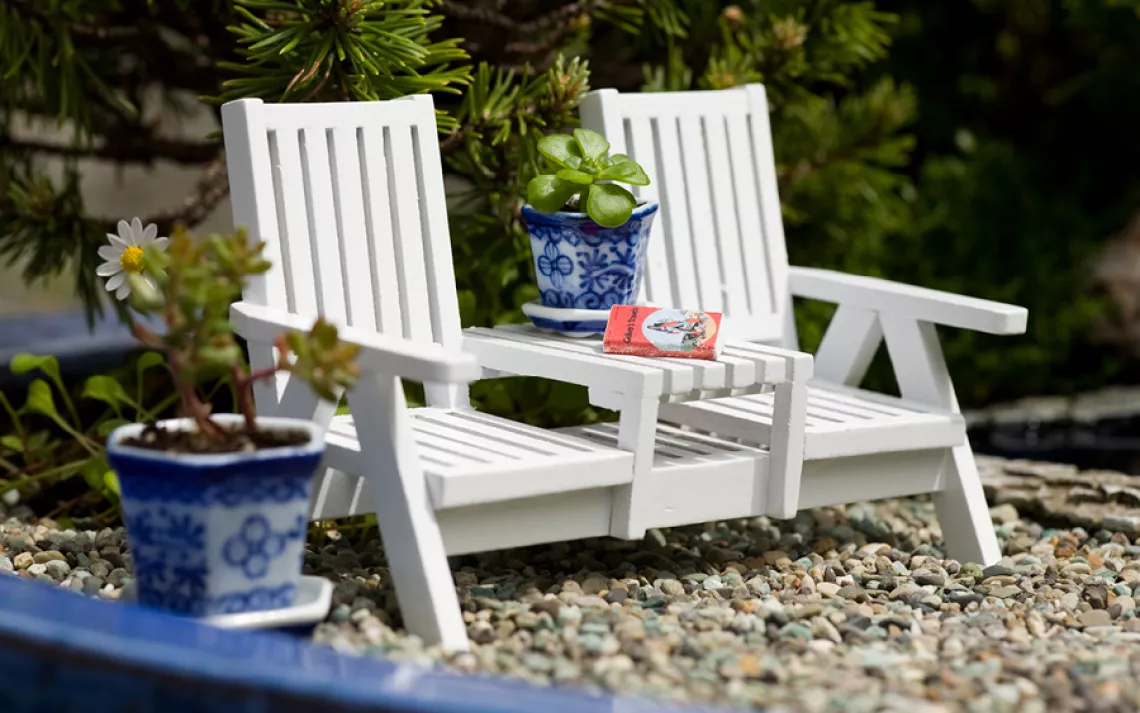
"A miniature garden scene is enchanting because you automatically start building a story about it," Calvo says. "You ask yourself, what's going on here? Who are those chairs for?" Another plus of miniature gardening: It's very low maintenance, so there's plenty of time for sitting in an Adirondack chair, reading the classics, and sipping a cold one.
Photo by Kate Baldwin
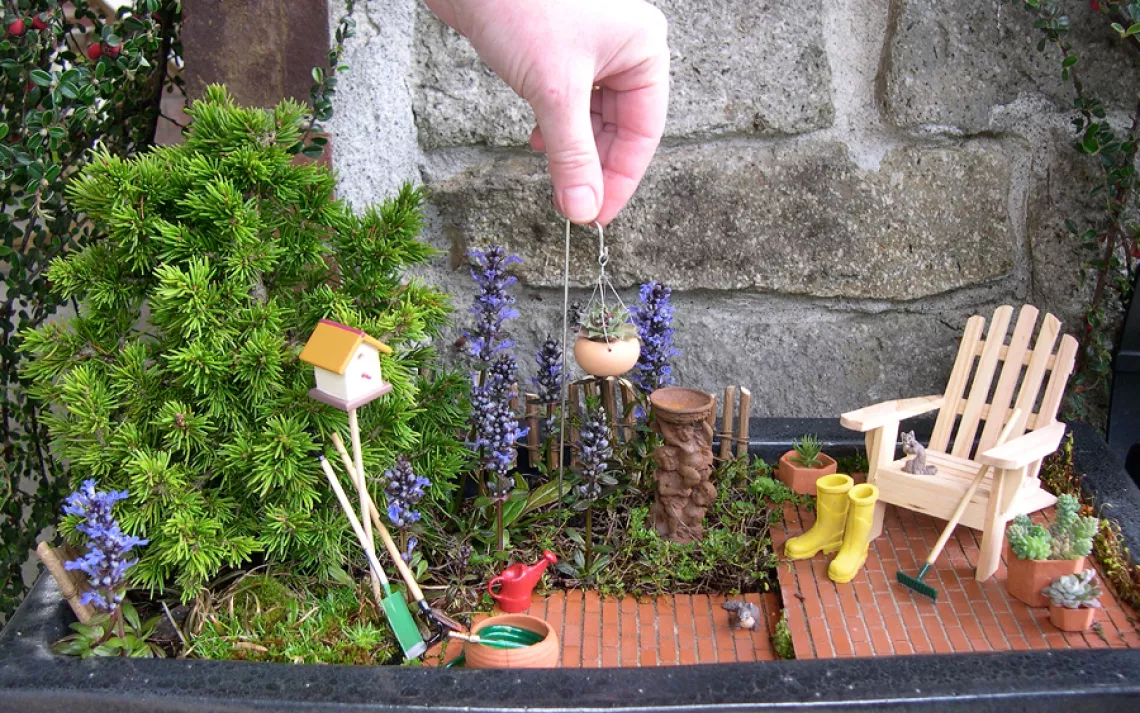
Can miniature gardening get any more meta than this miniature gardening scene? Your small design will experience the same variables as a full-size plot: weather, growth rate, light and soil conditions—though probably not gophers.
Photo by Janit Calvo
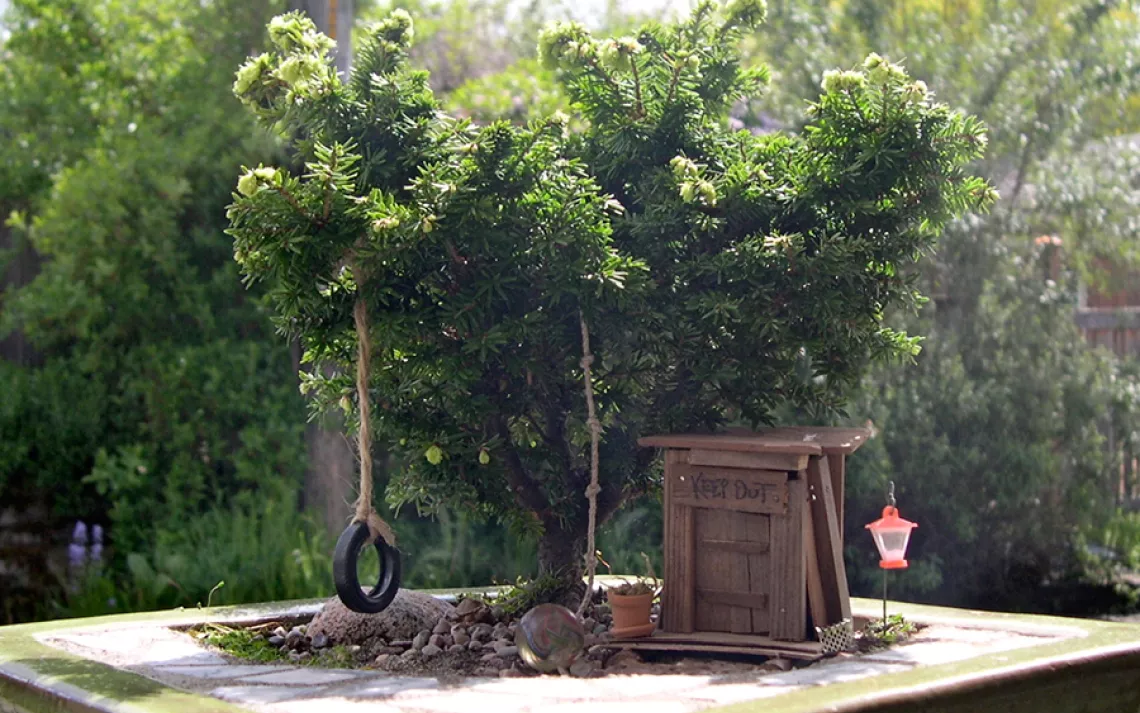
"A collection of African violets on a windowsill is just that, a collection," Calvo writes. "But place a small potted plant on a windowsill, put a miniature chair and a tiny watering can beside it, and suddenly you have a story to tell."
Photo by Janit Calvo
By M.P. Klier
M.P. Klier is Sierra's copy chief.
More articles by this author The Magazine of The Sierra Club
The Magazine of The Sierra Club


